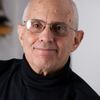
The bustling world of American yoga is abuzz with the inevitable sex scandal. John Friend, founder of Anusara Yoga, has admitted to numerous affairs with female students, some of whom were married. Because Friend is probably the best-known yoga teacher in America and the most successful yoga entrepreneur, the upheaval has attracted a good deal of attention. Some of the commentaries, predictably, are salacious and gossipy. Others have been thoughtful explorations of how yoga institutions ought to address the familiar issue of consensual sex where disparities of power and authority exist. Some of the discussion, however, has contained misleading and erroneous observations that need to be addressed.
Some writers, notably William Broad in the New York Times, have compared the Friend/Anusara upheaval to the scandals that rocked the world of several gurus in the post-60s era. One can understand why the comparisons are made; the situations have in common clandestine sexual liaisons between a male authority figure and women of subordinate status. They also have in common a spiritual context. While Anusara is a leading brand in a major industry, the industry is not exactly software or automobiles. Nor are yoga teaching institutions the same as universities or, for that matter, medical clinics. Despite the unfortunate tendency to reduce yoga to a health and fitness discipline, it is also a spiritual tradition, and John Friend, to his credit, is one of the teachers who emphasized that. For those reasons, Anusara is not just any old business, and John Friend is not just another boss caught with his pants down.
That said, it is inappropriate to compare the situation to the earlier guru scandals. I researched those scandals for my book, American Veda, and the chapter on the subject turned out to be the hardest to write. One reason the present is not a recapitulation of the past is that Friend is not a guru, as the others were, and Anusara is not a traditional spiritual lineage. Friend was, no doubt, the undisputed leader sitting alone atop his organization's edifice, but for all his superstar stature, he was seen primarily as a teacher and an entrepreneurial leader, not a holy man. No doubt, some of his students projected onto him qualities of wisdom and nobility that exceeded reality, but that happens around celebrities and authority figures in every walk of life. No one was expected to surrender to Friend's will the way traditional devotees surrender to their masters in guru lineages. The level of devotion, loyalty and obedience in traditional guru-disciple relationships -- in which the guru takes responsibility for the devotee's spiritual progress -- far exceeds anything one is likely to see in contemporary yoga circles. Furthermore, it was not assumed that John Friend was so enlightened as to be incapable of mistakes -- an illusory perfection that followers often, at their peril, attribute to gurus. Nor would questioning Friend cause anyone in his circle to be labeled spiritually deficient, another common syndrome in guru circles.
In addition, Friend is not a monk. He did not take a vow of celibacy, and he did not run an ashram where devotees were required or encouraged to be celibate. These are crucial distinctions, because one reason gurus are revered is that their renunciation presumably makes them "above" not only sex, but also money, status and other transient satisfactions that drive the rest of us. I am not aware of John Friend ever having made such claims, or of anyone having made them on his behalf. The gurus whose dalliances shocked and wounded their devotees the most were those who violated sacred vows, and who had hypocritically demanded restraint or total abstention from their followers. Presumably, the only explicit vows that were violated in the Anusara world were marital. That's serious enough, but it's not the double or triple whammy of the guru sexcapades, where the pain and disillusionment was so severe that, 30 or 40 years on, some people are still in denial and others are still healing their wounds and venting their anger.
So, while Anusara is not an ordinary business, it is also not a traditional guru-led organization; and John Friend is not an ordinary teacher or boss, but he's not a swami or a guru either. This illustrates the ambiguous position of modern yoga in general. Yoga occupies a space on a Venn diagram of American institutions where business, education, healthcare and spirituality all overlap. In all such institutions, of course, sexual relations between employers/teachers/providers and their employees/students/clients are either ardently discouraged or explicitly prohibited. That said, yoga teachers are more accurately compared to college professors or physical therapists than to traditional gurus.
The other mistake we shouldn't make is to draw unwarranted links between sex and yoga. William Broad does that in the New York Times, making questionable historical assumptions and citing scientific research on yoga's sexual benefits. That yoga studios might be the best thing to happen to human mating since the invention of the singles bar goes without saying, with all those flexible young bodies in close proximity. But stretching and bending together has never been necessary for men and women to hook up inappropriately. To paraphrase Cole Porter (he of the educated fleas), bosses and secretaries do it, teachers and students do it, doctors and patients do it, therapists and clients do it, ministers and congregants do it -- all without leotards and downward facing dog.
So, let's not leap to unwarranted conclusions about the modern yoga scene. I suggest everyone take a breath and let John Friend and everyone closely involved -- the women and their families, the Anusara teachers, the yoga community as a whole -- do the requisite healing and learning, without adding to their burden the onus of being exemplars of anything more than they are. The yoga tradition itself -- what I call the "Greater Yoga," as opposed to the exercise protocols that have come to define the term -- contains ample tools for that task.
For more by Philip Goldberg, click here.
For more on yoga, click here.
